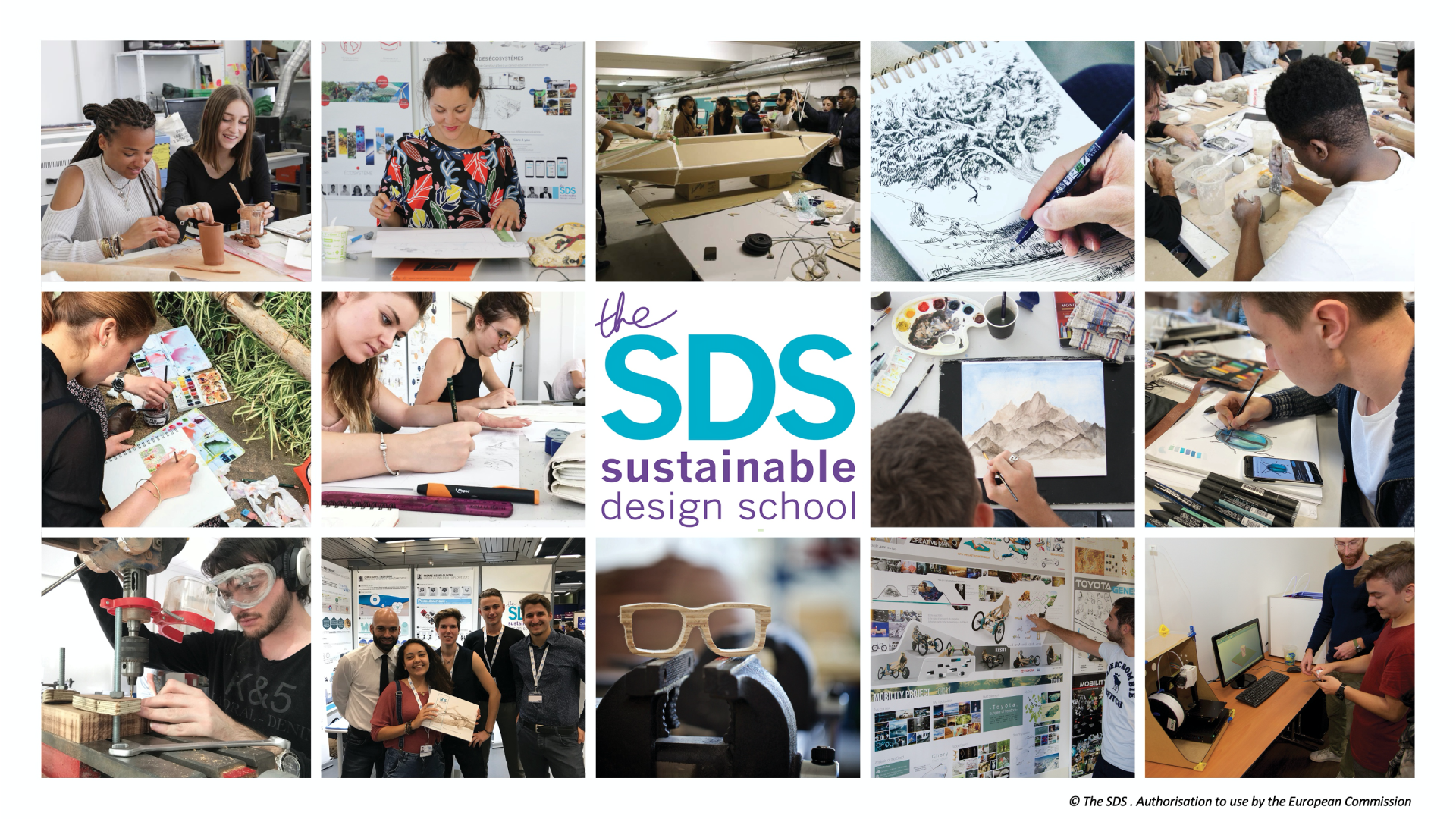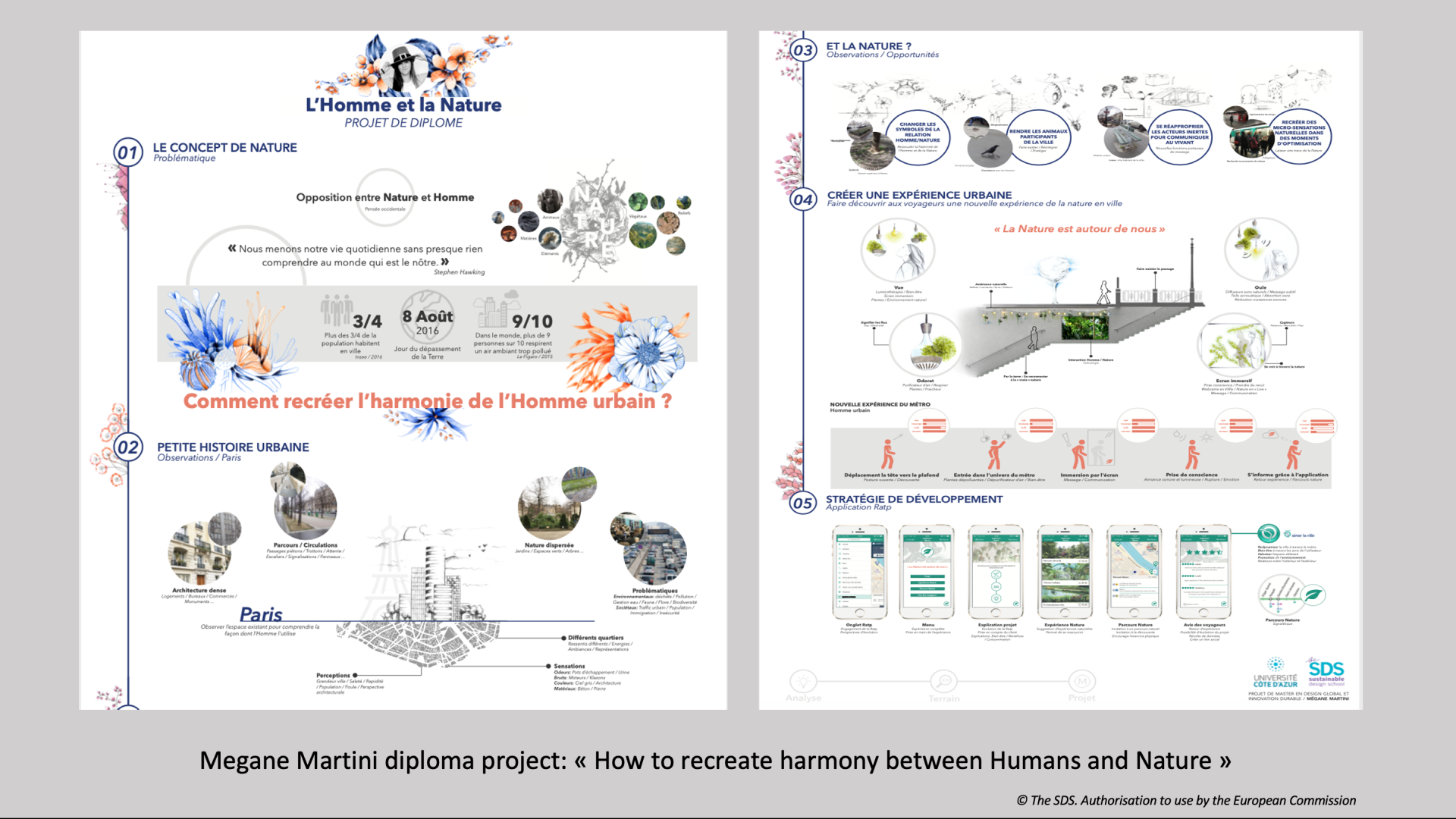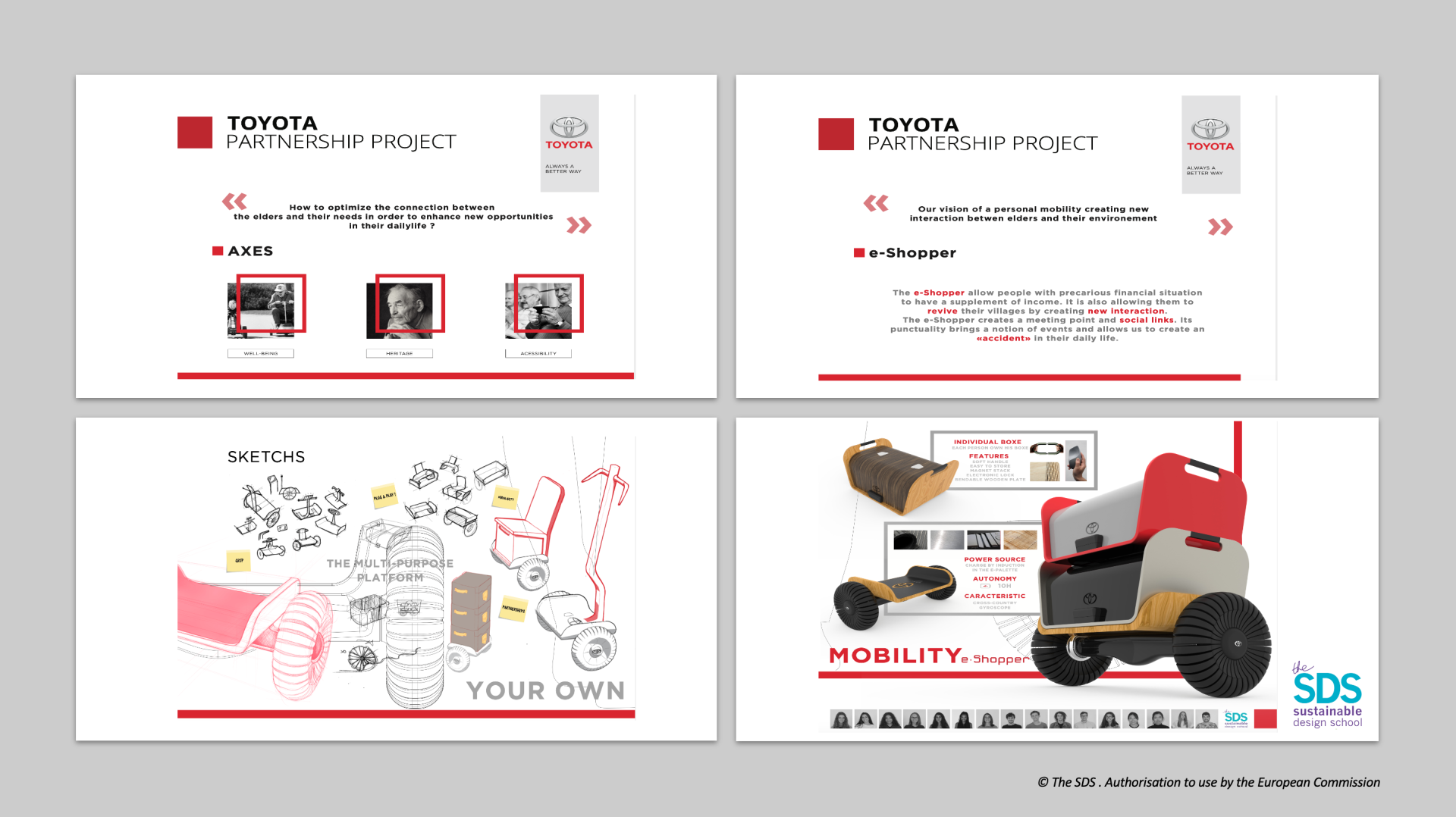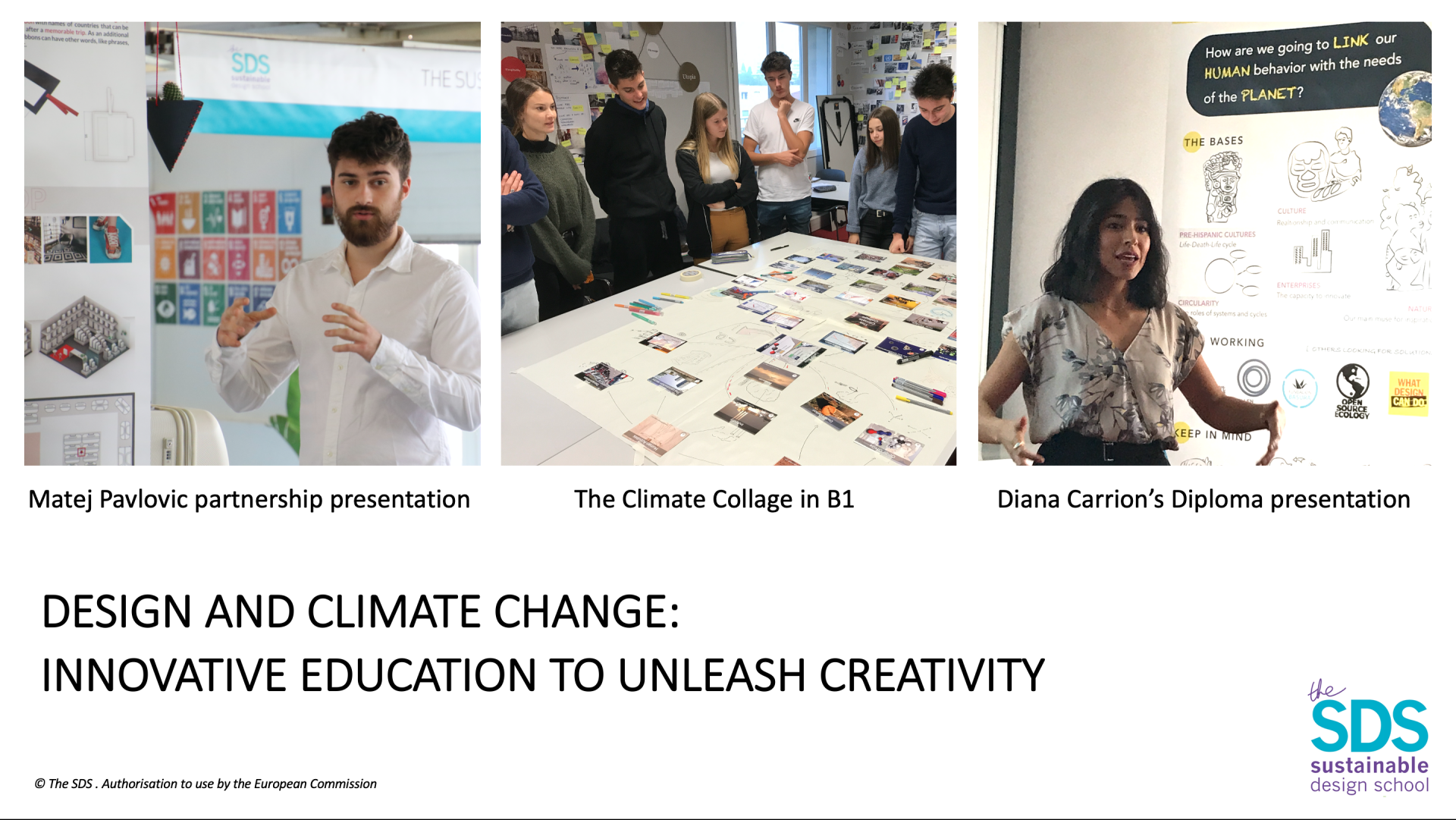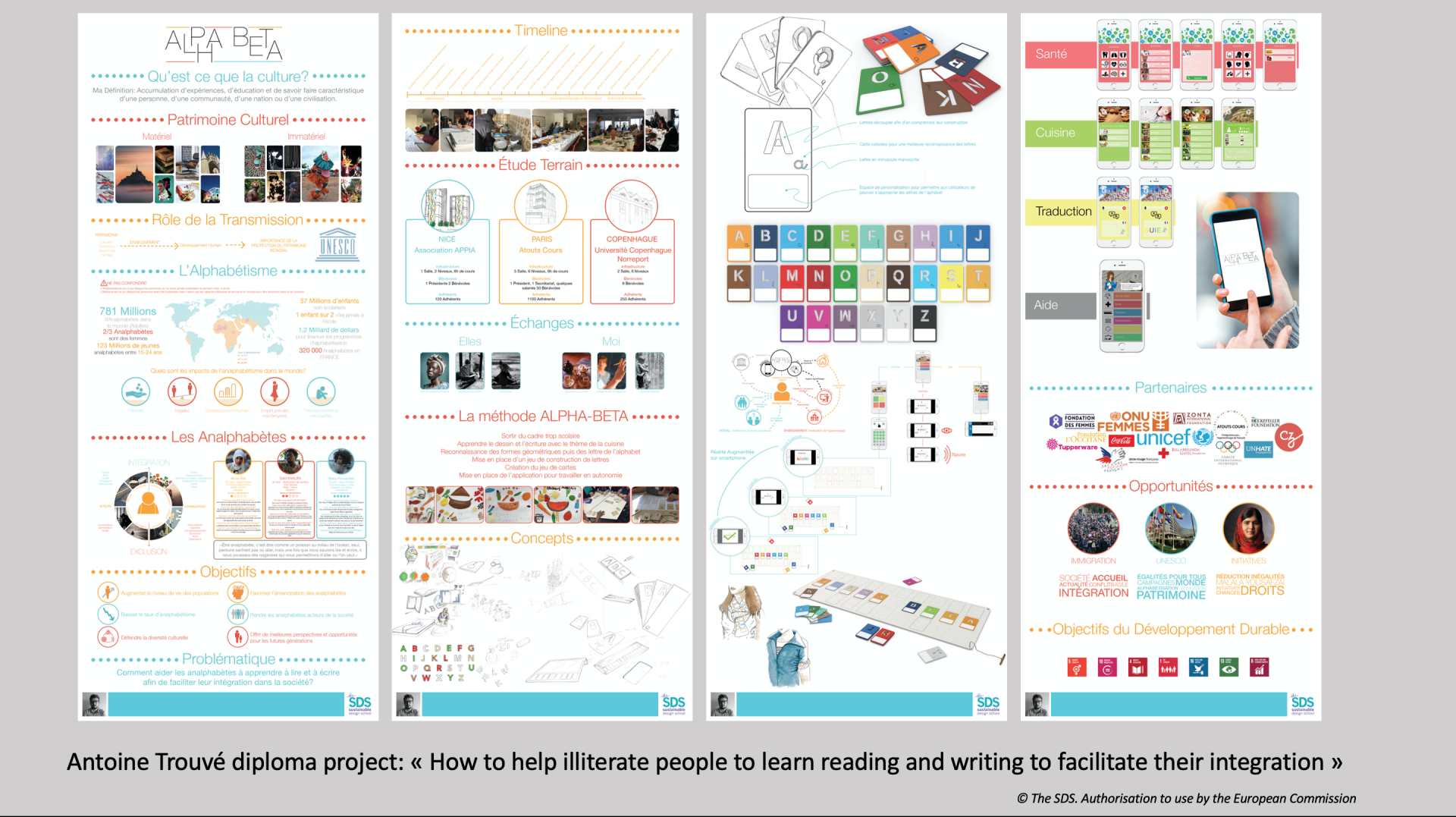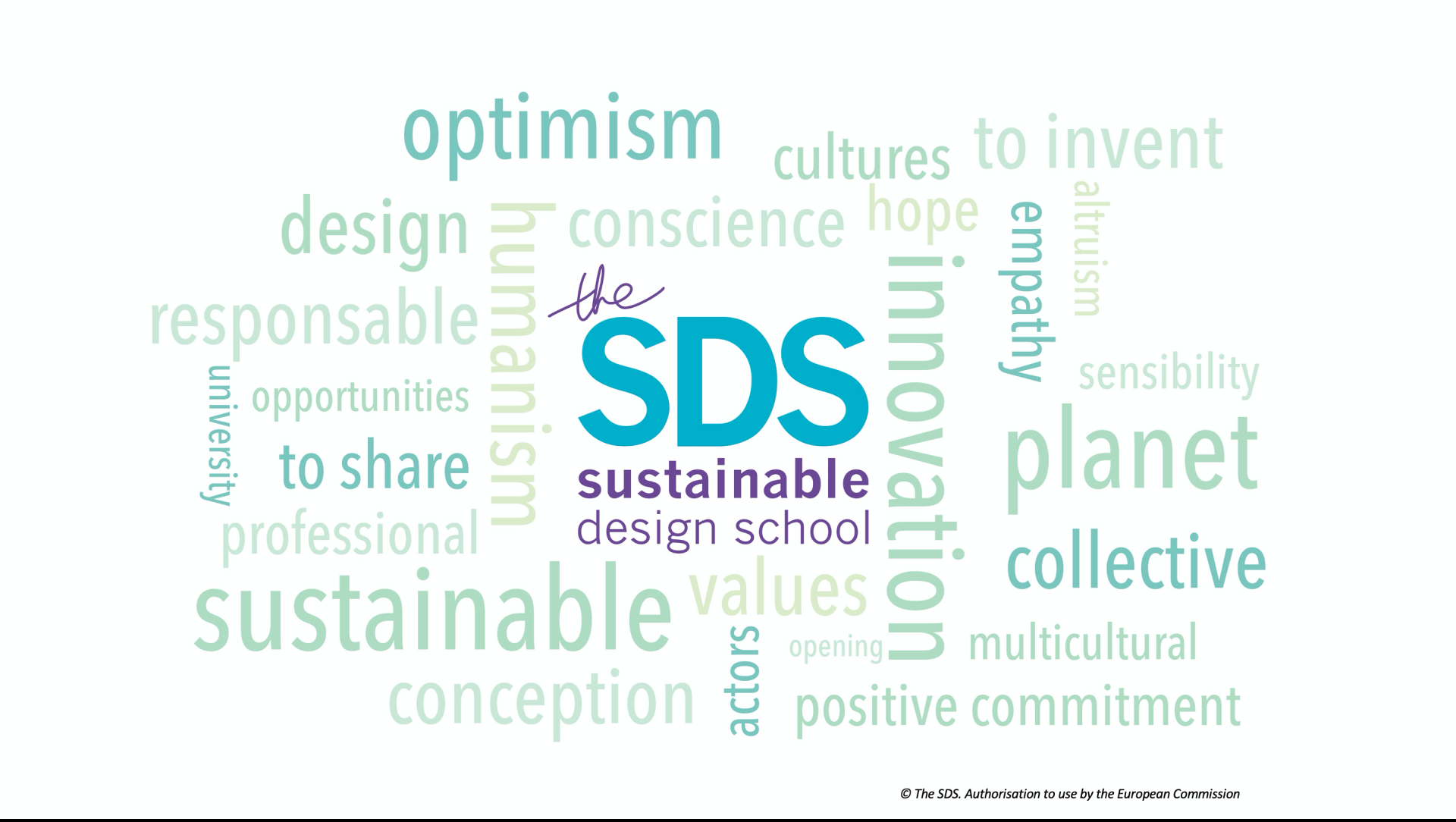The Sustainable Design School
Basic information
Project Title
Full project title
Category
Project Description
↵
The Sustainable Design School is an undergraduate and postgraduate school. We strive to empower students to become Designers in Sustainable Innovation.Our model of education is based on creativity, team work, and projects. We use design as a facilitation tool for solving problems in a sustainable, aesthetic, and inclusive way. We work in partnership with the innovative actors of our territory, companies, NGOs, local governments, to conceive solutions to respond to existing sustainable issues.
Project Region
EU Programme or fund
Description of the project
Summary
- We created The Sustainable Design School, an institution of higher education, in 2013.
- We strive to empower students to become "Designers in Sustainable Innovation".
- Our model of education is based on creativity, team work, and projects.
- We use design as a tool of facilitation for solving systemic issues in a sustainable aesthetic and inclusive way.
- We experiment in our curriculum innovative combinations of sustainable design tools such as eco-design, biomimicry, frugal innovation, meta design and sustainable concepts such as the Sustainable Development Goals (SDGs), geopoetics, sustainability science. We mix in our curriculum traditional and digital design techniques.
- We promote the concept of harmony with nature and nature based solutions.
- We work in partnership with the innovative actors in our territory : companies, NGOs, local governments to design solutions in response to existing sustainable issues.
- We have a strong professional focus to enable our students to find fulfilling jobs. Partnerships and internships enhance job opportunities for the SDS graduates.
- We are a member of Université Côte d’Azur, a pluridisciplinary university of excellence. We bring design thinking into the university’s interdisciplinary programs relating to sustainability science, engineering, climate change, entrepreneurship, art and music, anthropology, and communication.
- We have reached the gender parity among the students. 30% of our students benefit from fellowships.
- We welcome 20% of international students from Europe, Asia, Africa, Latin America and the Middle East.
Key objectives for sustainability
We prepare students to become Designers in Sustainable Innovation in 5 years (Bachelor & Master degrees). Designers facilitate creative, systemic and inclusive problem solving processes to provide solutions to sustainable issues. Solutions can be products, services, scenarios and eco-systems. Students learn to design solutions that are socially and environmentally responsible, and economically viable. In B1, students get an understanding of the concepts of sustainability at the individual and local levels. We start with eco-design, looking at the life cycle and material footprint of the products and services. In the first year, we also introduce the Sustainable Development Goals (SDGs) as a way of looking at the complexity and interlinkages of societal issues. We also provide an introduction on climate change science, including carbon footprint calculation, looking at climate change issues in the local environment of the school. In B2, we deepen the level of complexity of the sustainability concepts. In eco-conception, we evaluate the impact of various strategies, looking at the concepts of regeneration. On climate change, students learn about climate mitigation solutions applied to a sector of activity. Students learn about the international state of implementation of the Sustainable Development Goals. In B3, we bring to the students additional tools such as biomimicry, geopoetics and frugal innovation. On climate change, students learn about climate adaptation, the concepts of vulnerability, adaptive capacity and nature based solutions. In M1, students are introduced to a higher level of complexity and management. They learn about the climate psychology, and the interlinkages between biodiversity and climate change. In M2, students develop their own sustainable project. We walk the talk by being located in a refurbished industrial building. We strive to act sustainably by using recycled materials, reducing waste and restoring nature in the premises.
Key objectives for aesthetics and quality
We recognize that aesthetics is essential to foster a shared cultural environment and to drive acceptance of the transition to a sustainable society. We propose to all students a course in History of Art and Design that develops the evolution of aesthetics over the ages. We have created a course in History and Culture of Sustainable Design. We place academic drawing at the core of the SDS curriculum. Drawing is the way designers think. Drawing enables designers to learn how to observe and how to express cultural and aesthetic references. In the design course, students create their own iconography of objects. In the mood boards, students learn to express their aesthetic choices. We have created a course on sustainable aesthetics to explore the DNA of Nature, the wealth of its language and the execution of the 3 harmonious design points: Shape / Function / Substance. In this course, students understand the life cycle of Nature (from earth to earth) and apply concepts like the golden number proportions, Leonardo’s Vitruvian Man, the Modulor, fractals and the morphogenesis process. Nature has been a source of observation and inspiration since the foundation of the school. In the students' words:
"My name is design, like a flower A reed, flexible in my mind. As a collaboration between several conceptors."
"My name is design, like a rock Strong, following through with our ideas. Using resistant materials."
"My name is design, like a leaf Composed of complex, different structures. Which demonstrate that there are many possibilities."
"My name is design, like a water drop. Beautiful and smooth, understanding things. Without pollution, to be sustainable."
SLAM WITH NATURE. Florentin Depaillat and Juliette Martin - B3 students
Key objectives for inclusion
We place inclusion in the key values of the school:
- 30% of the students benefit from fellowships from the French government and from the SDS friends Fund.
- One of our international students received the Scholarship of Excellence of Master, offered by Emmanuel Macron's program "Make our planet great again".
- The school reaches gender parity among the students.
- The school welcomes 20% of international students from developed and emerging countries from Asia, Africa, Latin America and the Middle East.
Inclusion is also a key value in the sustainable design projects because we take into consideration the people, planet and prosperity dimensions of a project. When selecting the Sustainable Development Goals that are impacted by their projects, students look at SDG1 poverty, SDG 5 gender, SDG10 inequality. We are glad to have students who presented, for their diplomas, projects to fight women illiteracy, to foster migrants vocational education, to encourage the integration of homeless people and to assist students in situation of vulnerability.
Results in relation to category
The French government recognized our diploma in 2020 and created a new category of Master degree: “Designer in Sustainable Innovation”. The creation of this new category acknowledges the shift from the concept of product designer to the role of the designer as a facilitator of sustainable innovation.
Interdisciplinarity is in our DNA. We were one of the first design school to become in 2015 a member of a university of excellence in France, Université Côte d’Azur. This membership opened new opportunities of collaboration with research labs and graduate schools. The SDS students work with students from 10 sustainable masters degrees of the Mediterranean Institute of Risks Environment and Sustainable Development on solving sustainable issues presented by the Metropole Nice Cote d’Azur. The teams include students with design, engineering, scientific, management and communication backgrounds. The last workshop was on the impact of climate change at the horizon 2050 in the eco-valley in Nice. Every year, we welcome students from other university master’s degrees: anthropology, communication to introduce the potential of design in sustainable innovation.
The SDS students are inspired by the school to imagine new models of education. The SDS has fostered several diploma projects in the field of education: Corentin Le Guay has imagined a project called “Les petits lotis” with a new model of sustainable primary school. Justine Severino and Francesca Bianco have imagined a new program to teach the Sustainable Development Goals in kindergarden. Thomas Giraudon has developed Mithra a game to explain biodiversity to children.
How Citizens benefit
We are part of the innovation eco-system of the Côte d’Azur. We have developed 65 partnerships with NGOs, companies and local governments that have large impacts.
We work with local governments to raise citizen awareness or to enhance sustainable actions in the cities. We worked with the City of Cagnes sur mer (40 000 inhabitants) and the federation of retail businesses to introduce a new plastic free packaging made out of recycled material. We worked with the city of Carros (12000 inhabitants) to reorganize a district to improve the quality of life of the citizen in a sustainable way. We also worked with the Federation of industry in the Cote d'Azur to design a campus of vocation training. Our diploma students, Emma Gaojon and Saurabh Bedharkar have worked with the Metropole Nice Cote d'Azur (550 000 inhabitants) to raise citizen's awareness of climate change.
We also partner with companies at the international level. We have partners which are large companies in various sectors such as energy, automotive, aircraft, travel, retail, luxury, consulting industries. The diversity of issues allow students to learn about the complexity of implementing sustainability in real life, whether it is about creating a sustainable innovation center, reducing the impact of the life cycle of products or inventing new modes of clean mobility.
The School also works with NGOs on awareness campaigns such as the campaign against plastic pollution in the sea conducted by Plastic Odyssey.
The benefit for the students is to design sustainable solutions for real issues, immerse themselves in a professional environment and manage teams and projects. During the partnership, students learn about collaboration and collective intelligence. For each partnership, we create transversal teams of students from the 3 years of the Bachelor and the Master 1 (with different business skills and different cultural origins). Students are supervised by professional designers and experts.
Innovative character
Our objective is to empower the students to become actors of the transition to a sustainable society. Our model of education is based on creativity, team work, and projects.
We aims at unleashing students creativity and engagement on solving sustainable issues.
We conceive the school as a multiplier of innovation to create sustainable solutions with our partners. We want the students to interact with professionals with different expertise to get exposure to interdisciplinarity.
We encourage team work up to the diploma project since we believe that collaboration is a key value in solving complex and systemic issues such as climate change.
We explore on a continuous basis the interlinkages between design and the new concepts of sustainability such as regenerative solutions, nature based solutions, smart climate solutions...We encourage our students to research the latest trends of innovation at the local and at the international levels, and to apply them in designing sustainable solutions.

